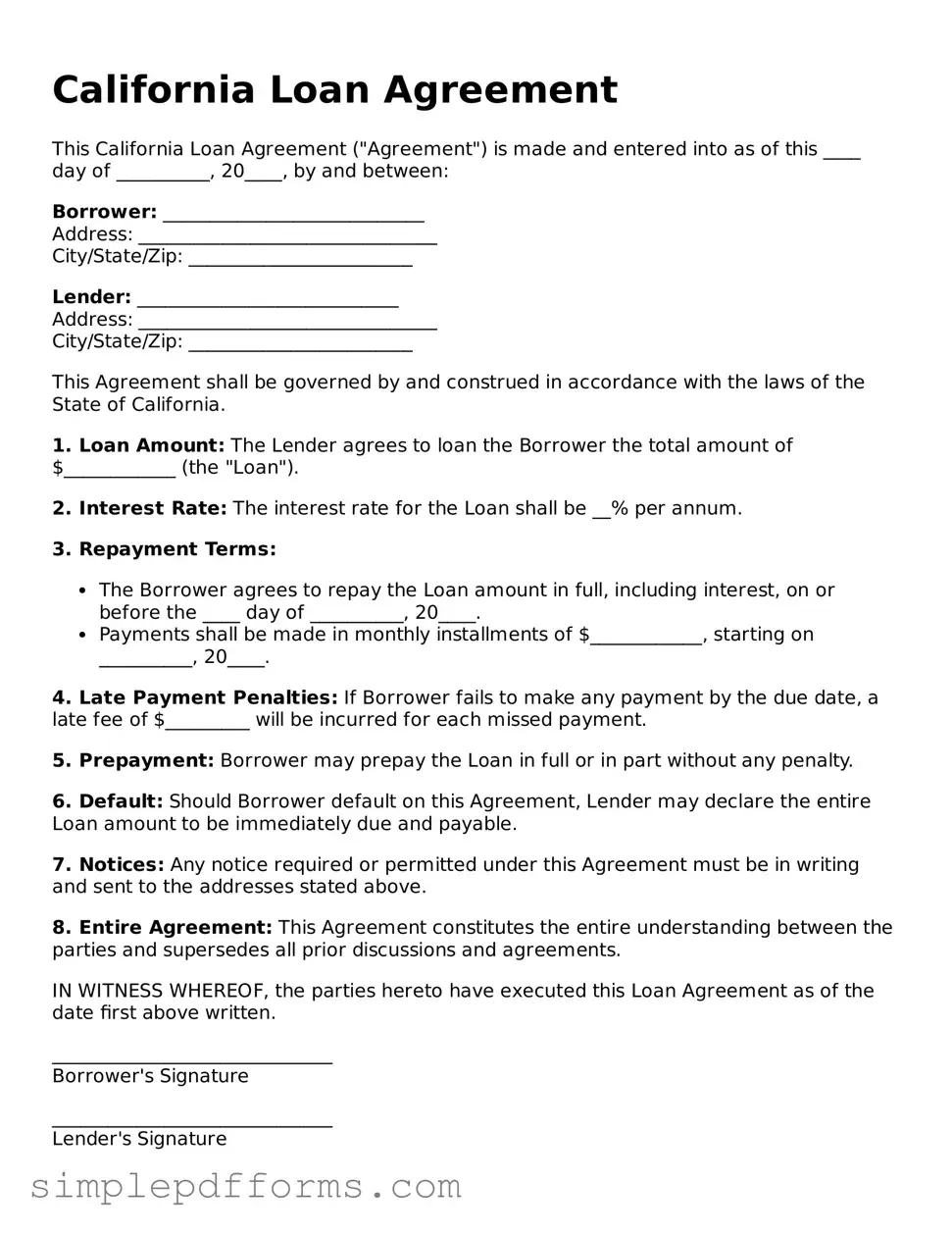California Loan Agreement
This California Loan Agreement ("Agreement") is made and entered into as of this ____ day of __________, 20____, by and between:
Borrower: ____________________________
Address: ________________________________
City/State/Zip: ________________________
Lender: ____________________________
Address: ________________________________
City/State/Zip: ________________________
This Agreement shall be governed by and construed in accordance with the laws of the State of California.
1. Loan Amount: The Lender agrees to loan the Borrower the total amount of $____________ (the "Loan").
2. Interest Rate: The interest rate for the Loan shall be __% per annum.
3. Repayment Terms:
- The Borrower agrees to repay the Loan amount in full, including interest, on or before the ____ day of __________, 20____.
- Payments shall be made in monthly installments of $____________, starting on __________, 20____.
4. Late Payment Penalties: If Borrower fails to make any payment by the due date, a late fee of $_________ will be incurred for each missed payment.
5. Prepayment: Borrower may prepay the Loan in full or in part without any penalty.
6. Default: Should Borrower default on this Agreement, Lender may declare the entire Loan amount to be immediately due and payable.
7. Notices: Any notice required or permitted under this Agreement must be in writing and sent to the addresses stated above.
8. Entire Agreement: This Agreement constitutes the entire understanding between the parties and supersedes all prior discussions and agreements.
IN WITNESS WHEREOF, the parties hereto have executed this Loan Agreement as of the date first above written.
______________________________
Borrower's Signature
______________________________
Lender's Signature
